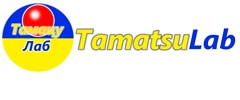

World Region Information --- Niger Information
Niger
We are researching Niger area information. The Republic of Niger is a landlocked country in West Africa. We will feature information that seems to be good to know when advancing to Niger.


World Region Information --- Niger Information
We are researching Niger area information. The Republic of Niger is a landlocked country in West Africa. We will feature information that seems to be good to know when advancing to Niger.
It is bordered by Libya to the northeast, Chad to the east, Nigeria to the south, Benin to the southwest, Mali to the northwest, Burkina Faso to the southwest and Algeria to the northwest.
Approximately 1.27 million km2
Maradi(270,000), Zinder(240,000), etc.
Approximately 22.44 million people
Hausa (55.4%), Zarmasonhai (21%), Tuareg (9.3%), Hula (8.5%), Kanurimanga (4.7%), etc.
French is official language. Other Arabic, Hausa, Germa, Fulani, etc.
Islamic 99.3%, Other
- Grand Mosque of Niamey
You can see the traditional culture of the four regions and the cultural changes of the French colonial period.
- Ferme Youyou
- National Museum of Niger
- Koure Giraffe Reserve
- Sultans Palace
Although it has a six-year compulsory education system, it has one of the lowest literacy rates in the world.
- Universite islamic de Say
- Universite Abdou Moumouni
- Bibliotheque universitaire centrale de l'universite Abdou-Moumouni
1890 French occupy Niger
1958 Joined the French Community as an autonomous republic
1960 Independence
1968-73 Severe drought caused extensive damage to livestock and crops
1974 A military coup establishes a military government
1989 New constitution approved. A single party system, but a transition to civilian rule
1990 Opposition legalized after strikes and demonstrations. Northern Tuareg Rebellion
1991 Stripped of presidential powers. Provisional government established
1992 Ratified new constitution allowing multi-party elections
1995 Ceasefire between the government and the Tuareg Saharan Revolutionary Army takes effect
1996 military coup. Ban all political parties. Adoption of a new constitution that expands the powers of the president. Ban on political parties lifted
1997 Tuareg hardliners, the Front for Democratic Reconstruction, sign a peace deal with the government
1999 Presidential assassination. Adoption of a new constitution that reverses the expansion of presidential powers
2001 Hunting prohibited to protect wild animals. Suspicion of Niger (Suspicion that Iraq tried to obtain uranium from Niger) surfaced
2002 Soldiers rebelled in the eastern part of the country and in the capital, complaining about unpaid wages and demanding better treatment. Rebellion suppressed.
2003 Locust outbreak
2007 Warning declared in the north. Reinforcement of armaments against Tuareg rebels
2009 In Tripoli, the Libyan capital, the government and Tuareg rebels agree to end their confrontation. Constitution suspended. Three presidents can be elected. Constitutional approval that expands the president's rights. Opposition boycotts election
2010 military coup. Expulsion of the president. establishment of a military government. Food shortage. African Union suspends Niger's membership. Approval of a new constitution for the transition to civilian rule
2011 presidential election. Transition to civilian rule
2012 Thousands of refugees come to Niger, fleeing fighting in Mali
2013 Suicide bombings at military barracks and ruined uranium mines in the north
2016 Boko Haram militants attack the southeastern part of the town of Bosso
2017 State of emergency declared in western region adjacent to Mali
It is a semi-presidential constitutional republic. The president is the head of state and the prime minister is appointed by the president. The parliament is unicameral.
- Presidential Palace
- Assemblee Nationale du Niger
- Cour de Cassation
$510
The economy is intensively dependent on subsistence crops, livestock, and the world's largest uranium deposit. The economy is in recession due to repeated droughts, desertification, 2.9% population growth and declining global demand for uranium.
South Africa, Egypt, Nigeria, Democratic Republic of the Congo, Ethiopia, Kenya, Tanzania, Uganda, Mozambique, Madagascar, Zambia, Malawi, Zimbabwe, Botswana, Namibia, Angola, Cote d'Ivoire, Morocco, Cameroon, Ghana , Burkina Faso, Congo Republic, Gabon, Central African Republic, Chad, Niger, Mali, Mauritania, Algeria, Tunisia, Libya , Sudan, South Sudan, Guinea, Senegal, Eritrea, Djibouti, Somalia, Rwanda, Burundi, Seychelles, Comoros, Mauritius, Eswatini, Lesotho, Equatorial Guinea, Sao Tome and Principe, Benin, Togo, Liberia, Sierra Leone, Guinea Bissau, Gambia, Cape Verde